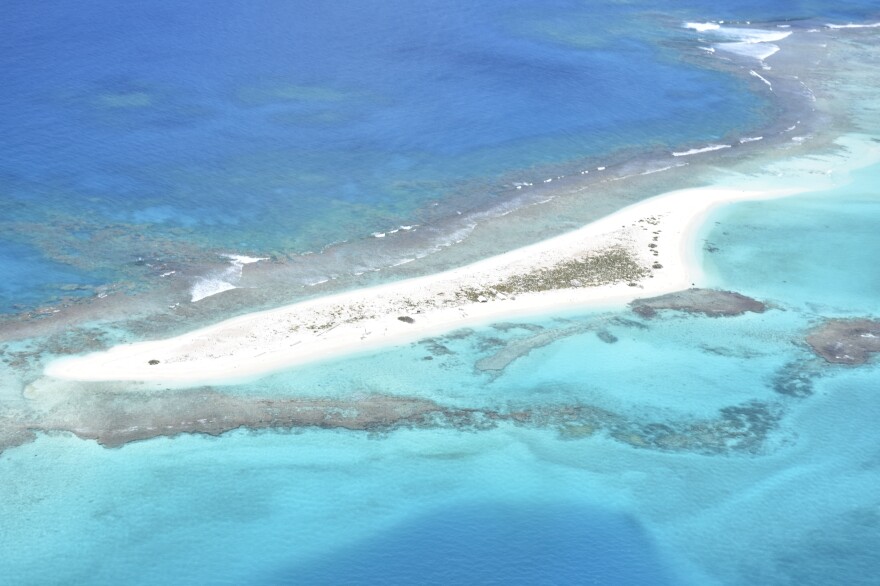A remote northwestern Hawaiian island has nearly vanished after Hurricane Walaka barreled through the Pacific last month, eliminating — at least for now — a critical habitat for endangered species.
Only two minuscule slivers of East Island have resurfaced since the Category 5 storm struck the region and washed away the 11-acre strip of sand and gravel that is part of the French Frigate Shoals.

"Without a doubt it was the most important nesting site for green sea turtles," Charles Littnan, a biologist with the National Oceanic and Atmospheric Administration Fisheries Hawaiian Monk Seal Research Program, told NPR.
"It's a really powerful example of the power and potential of nature that overnight an island was washed away," Littnan said.
While the French Frigate Shoals — about 550 miles northwest of Honolulu — represent the nesting site for 96 percent of the world's Hawaiian green sea turtle population, the tiny islet has been host to 50 percent of those breeding turtles.
The island also was home to critically endangered Hawaiian monk seals. Each year about 200 of the seals visit East Island, and about 30 seals have their pups there, Littnan estimated, noting that there are only about 1,400 of the animals in the world.

It is unclear where the seals and turtles that rely on the island will go next or what the long-term impact to wildlife will be.
"But in terms of the timing, it couldn't have happened at a better time," Littnan explained.
The powerful storm — one of the most intense hurricanes on record to strike the region — hit at the very end of the breeding season. NOAA's Pacific Islands Fisheries Science Center estimates only one monk seal mother and pup remained on the island when Hurricane Walaka struck. And despite the destruction of 20 percent of turtle nests, Littnan confirmed this was "a very low turtle year."
Approximately 120 turtles nested this season, a significant drop from previous years when 800 or more nested on the island.

"No one expected East Island to disappear this quickly," Chip Fletcher of the University of Hawaii's School of Ocean and Earth Science and Technology told Hawaii News Now.
Randy Kosaki, deputy superintendent for research and field operations for NOAA at the Papahanaumokuakea Marine National Monument, said the inundation of the island can't be directly tied to climate change, according to the Honolulu Civil Beat. However, he said, "The take-home message is climate change is real, and it's happening now."
Scientists won't know the full extent of Walaka's impact on the wildlife of the Hawaiian archipelago for another year, when scientist return to survey the islets. In the interim, researchers are conducting a handful of information-gathering expeditions. Hawaii News Now reported aerial photographs taken after the storm show sections of East Island have resurfaced.
"We often underestimate the adaptability of wildlife," Littnan said. "If there's a silver lining to this, it's that we're all learning a lot about how to adapt in the future."
Copyright 2021 NPR. To see more, visit https://www.npr.org.



